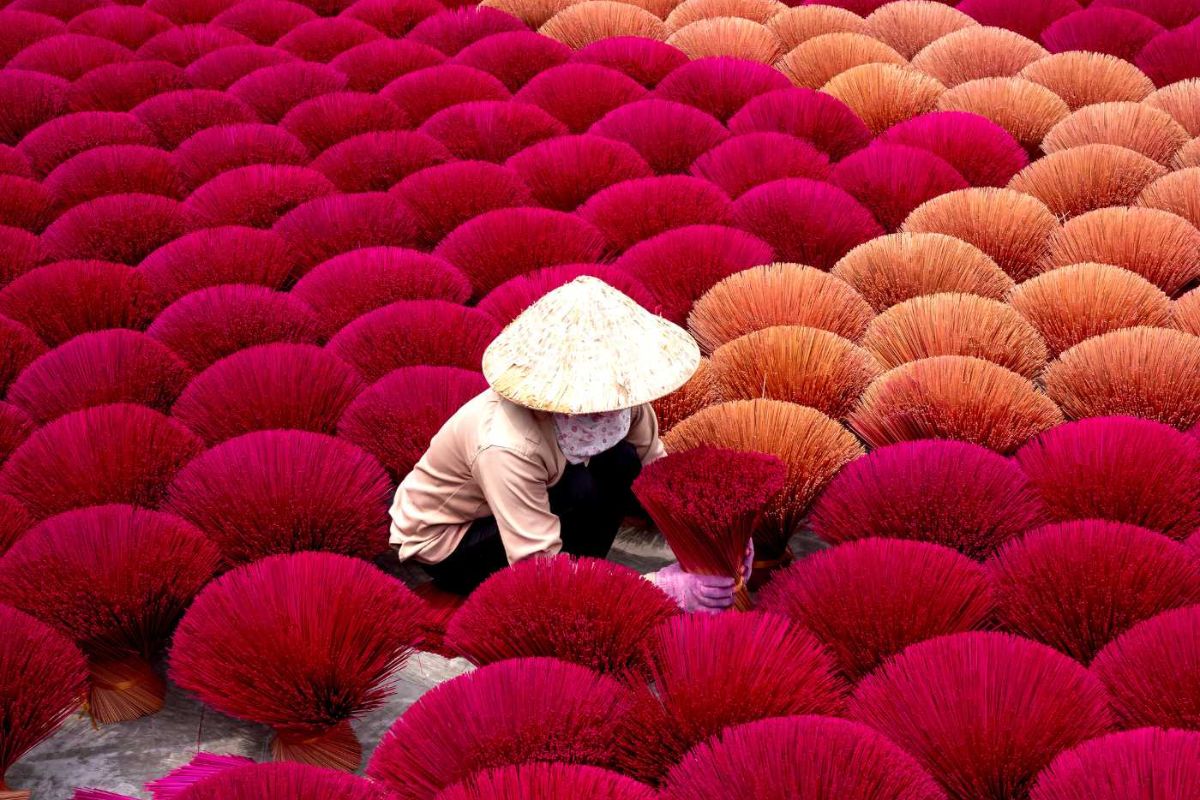TABLE OF CONTENT
Nestled within the vibrant heart of Vietnam, the Ho Chi Minh City Cu Chi tunnels are a testament to the resilience and ingenuity of the Vietnamese during the war. These intricate underground passages stand as a poignant reminder of the country’s tumultuous past and its unwavering spirit. Join us on an expedition to uncover the secrets hidden beneath the surface and delve into the fascinating history of the Cu Chi tunnels from Ho Chi Minh.
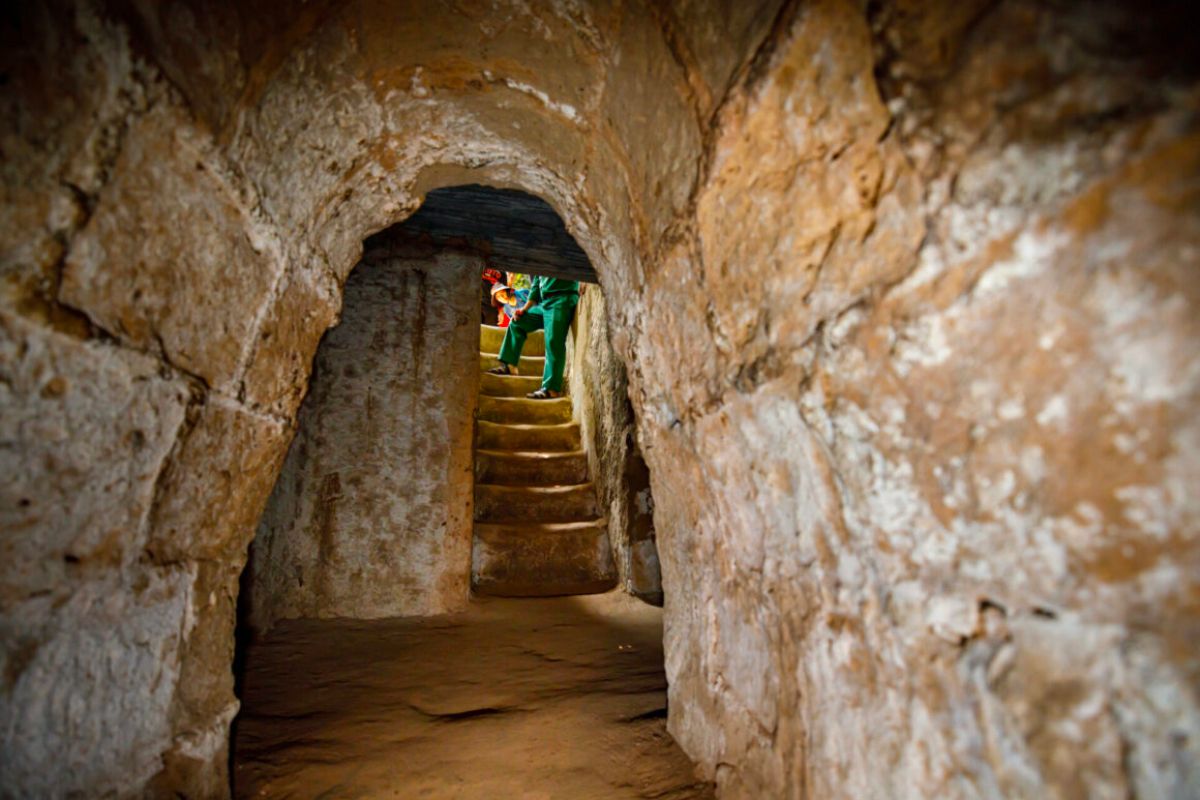
Overview of Ho Chi Minh City Cu Chi Tunnels
The Cu Chi Tunnels are a national historical site visited by many tourists from both domestic and international destinations. It is not only a historical relic but also a military construction closely linked to the resistance against the French colonialists during the period from 1946 to 1948 by the Vietnamese people. Let’s explore this article to help you have a perfect Ho Chi Minh City Tour!
Where is Ho Chi Minh City Cu Chi Tunnels
The Ho Chi Minh City Cu Chi Tunnels is a special national historical site and is one of the six famous man-made structures in the world today. Located on Provincial Road 15, Phu Hiep Hamlet, Phu My Hung Commune, Cu Chi District, Ho Chi Minh City, the Cu Chi Tunnels historical site is not far from the city. The distance from Ho Chi Minh City to the Cu Chi Tunnels is about 70km, a not-too-far distance for all tourists.
With three different levels, the Cu Chi Tunnels have a total length of up to 250km, with the deepest level being 12m underground. The elaborate construction by the Vietnamese people during the resistance against French colonialism has now entered the top 6 famous man-made structures in the world and the top 7 most peculiar destinations in Southeast Asia.
History of Cu Chi Tunnels
The Ho Chi Minh City Cu Chi Tunnels were built by the Vietnamese army and people over 25 years from 1948 in the resistance war against the French, aiming to shelter and store weapons and military supplies. From 1961 to 1965, the tunnel network was expanded and interconnected between villages, becoming an indispensable part of the Vietnamese people’s struggle and serving as a home for thousands of soldiers.
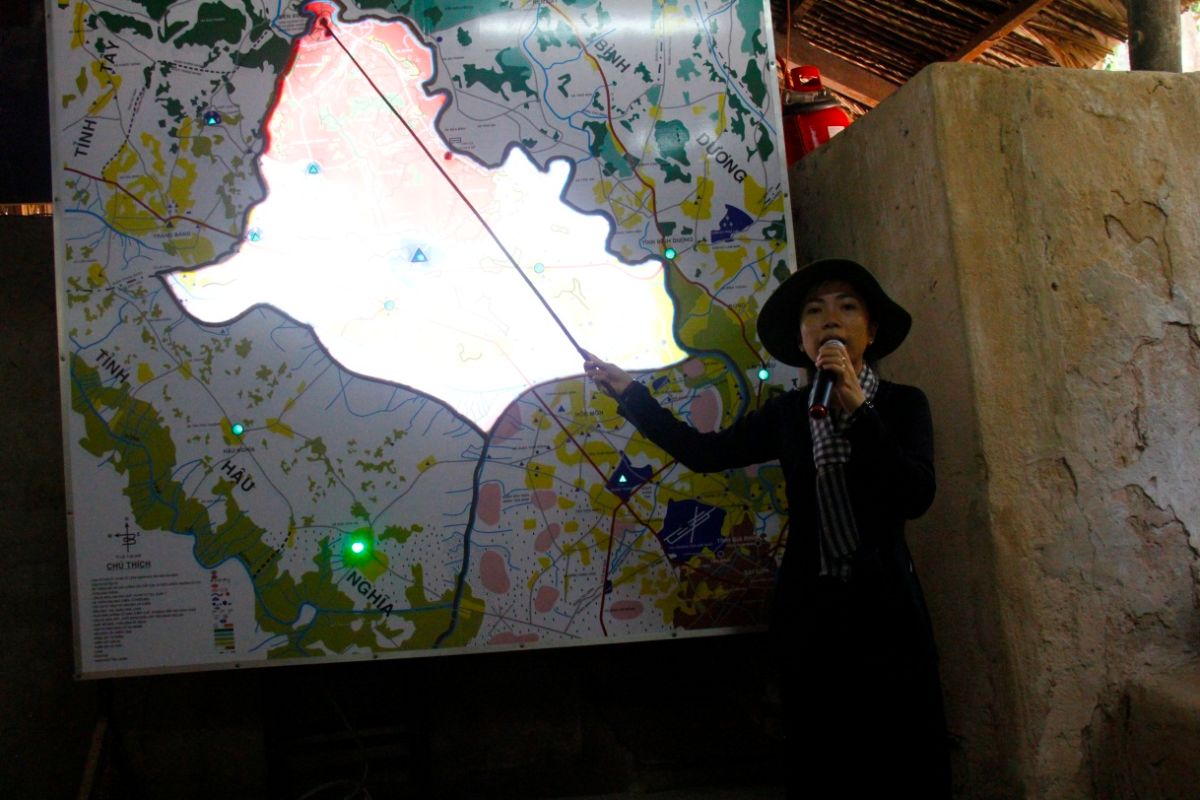
The Cu Chi tunnels network acted as a fortress, an isolated city underground, helping the Communist forces devise strategies, launch surprise military campaigns, and serve as medical stations and supply depots. Above the tunnels, there were numerous traps, spike pits, bunkers, etc., to aid in the fight against the French colonialists.
How to get from Ho Chi Minh City to Cu Chi Tunnels
The distance to Cu Chi tunnels from Ho Chi Minh City is about 70km, and there are several convenient ways to travel there. Below are some of the most convenient transportation options for your trip:
- Motorbike, private car: This is a convenient and cost-effective option for you. From the center of Ho Chi Minh City, you will head towards An Suong intersection, then take National Highway 22 to reach the Cu Chi area. The route is straightforward and takes about 1.5 hours to reach this tourist destination.
- Taxi: This is the most convenient option for those with a lot of luggage, but it will also be the most expensive. You can book a taxi through various taxi-hailing apps, with prices ranging from 500,000 to 600,000 VND per trip.
- Bus: A cost-effective way to get to the Cu Chi Tunnels from Ho Chi Minh City is by bus. You will need to take 2 bus routes. First, catch bus route number 13 at 23-9 Park (near Pham Ngu Lao Street) to Cu Chi Bus Station. Then, take bus route number 79 to Ben Duoc, which is part of the Cu Chi Tunnels. For just over 1 USD and a journey of about 2.5 hours, you can reach this interesting tourist spot.
- Canoe, boat: An interesting option for those who enjoy new experiences. Boats or canoes will pick you up at Tan Cang Pier and take you across the Saigon River to Cu Chi in about 1.5 hours.
>> Explore more: Vietnam Travel Guide – What To Know Before Your Journey
Explore the Cu Chi Tunnels complex
Cu Chi Tunnels System
With a total length of up to 250 km, the Cu Chi Tunnels system stretches to the Cambodia border. Currently, about 120 km of tunnels are preserved and open for visitors. The intricate architectural design of the Cu Chi Tunnels bewilders tourists everywhere. The entrances to the tunnels are small and narrow, designed only for soldiers and Vietnamese civilians during the resistance war. The hiding tunnel entrances are cleverly disguised with wood and leaves to avoid detection by enemies.
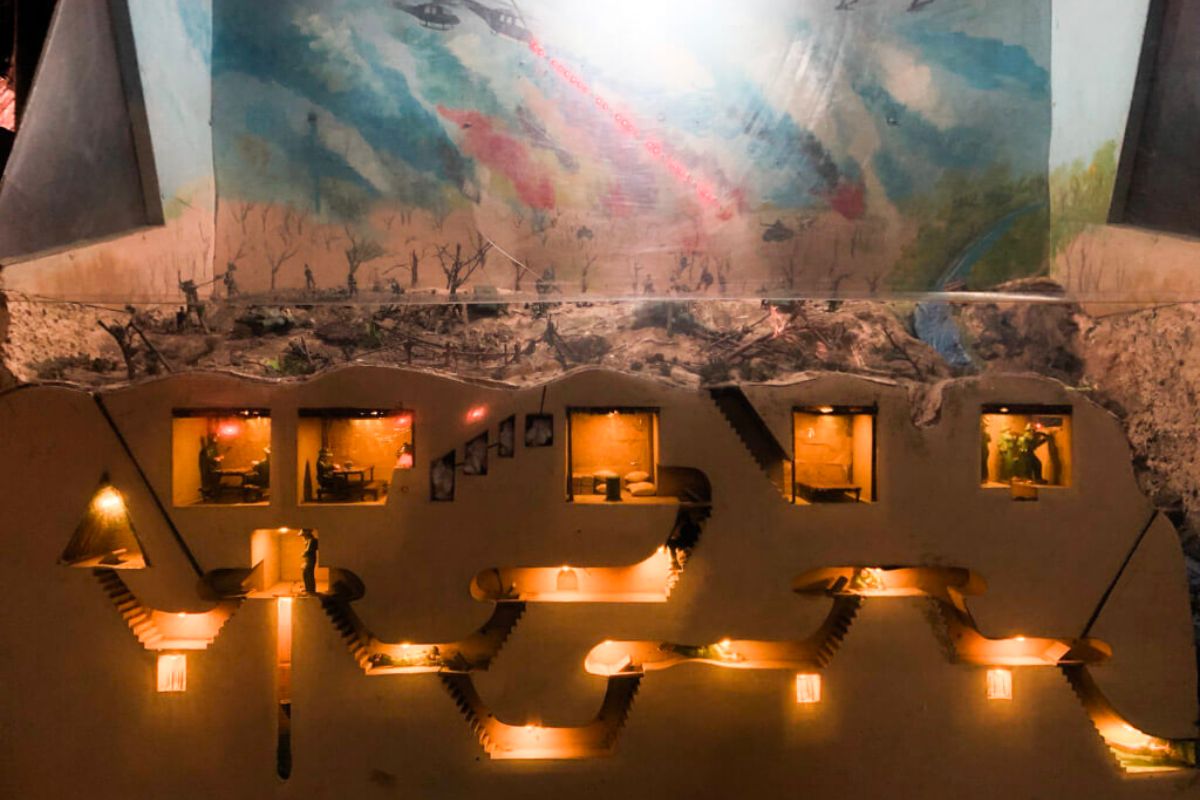
The tunnel system consists of 3 deep levels. The first level, 3 meters below the ground, is capable of withstanding bullets, tanks, armored vehicles, and chemical weapons. The second level, 5 meters underground, can withstand various types of bombs and bullets safely. The deepest level, located 8-10 meters below the ground, connects to the Saigon River via the central tunnel and extended branches. Hoang Cam kitchen was also built so that soldiers and civilians could cook without being detected by the enemy.
Using only rudimentary tools such as picks, shovels, or even their hands, Vietnamese soldiers and civilians constructed an “underground city” to meet the essential needs of thousands of people, including hospitals, kitchens, weapon depots, and command centers.
>> Explore more: Vietnam War Tour Ho Chi Minh City, 5 Best Places Worth Visiting
Ben Dinh Tunnels
Located closer to Ho Chi Minh City, the Ben Dinh Tunnels offer visitors a glimpse into the original design and construction of the Cu Chi tunnel system. The Ben Dinh Tunnels are conveniently located next to the Saigon River, serving as an emergency escape route for soldiers and civilians when detected by the enemy. These tunnels were completed and utilized for approximately 7 years from 1968 to 1975.
Guided tours lead visitors through the Ho Chi Minh city tunnels tour, providing historical context and anecdotes about life underground. Highlights include viewing ingenious trapdoors, hidden entrances, and camouflaged ventilation shafts used by Vietnamese soldiers to evade detection. Additionally, visitors have the opportunity to explore above-ground displays showcasing weapons, tools, and makeshift living quarters used by the Viet Cong.
Ben Duoc Tunnels

For a more immersive and less crowded experience, venture further afield to the Ben Duoc Tunnels (five times bigger than Ben Dinh Tunnels), located approximately 20 kilometers from Ben Dinh. The Ben Duoc Tunnels boast a more extensive network of tunnels. Tourists can crawl through the narrow and rugged tunnels to better understand the hardships of life within these underground passages. Tourists can also explore storage rooms, and even a field hospital, gaining a comprehensive understanding of the tunnel’s multifaceted functions during the war.
In addition to tunnel exploration, the Ben Duoc site features Ben Duoc Memorial Temple for fallen soldiers, as well as a museum showcasing artifacts and photographs from the war era.
>> Explore 10 best museums in Ho Chi Minh City—discovery here!
What to do in Ho Chi Minh City Tunnels Tour
A visit to the Ho Chi Minh city Cu Chi tunnels offers a range of activities catering to different interests and preferences.
Experience inside the Cu Chi tunnels
One of the main and most interesting activities you must participate in when visiting the Cu Chi Tunnels is exploring the 120-meter tunnel located deep underground. Here, you will be able to reenact all the activities and lifestyles during the period of the Indochina War that your ancestors experienced.
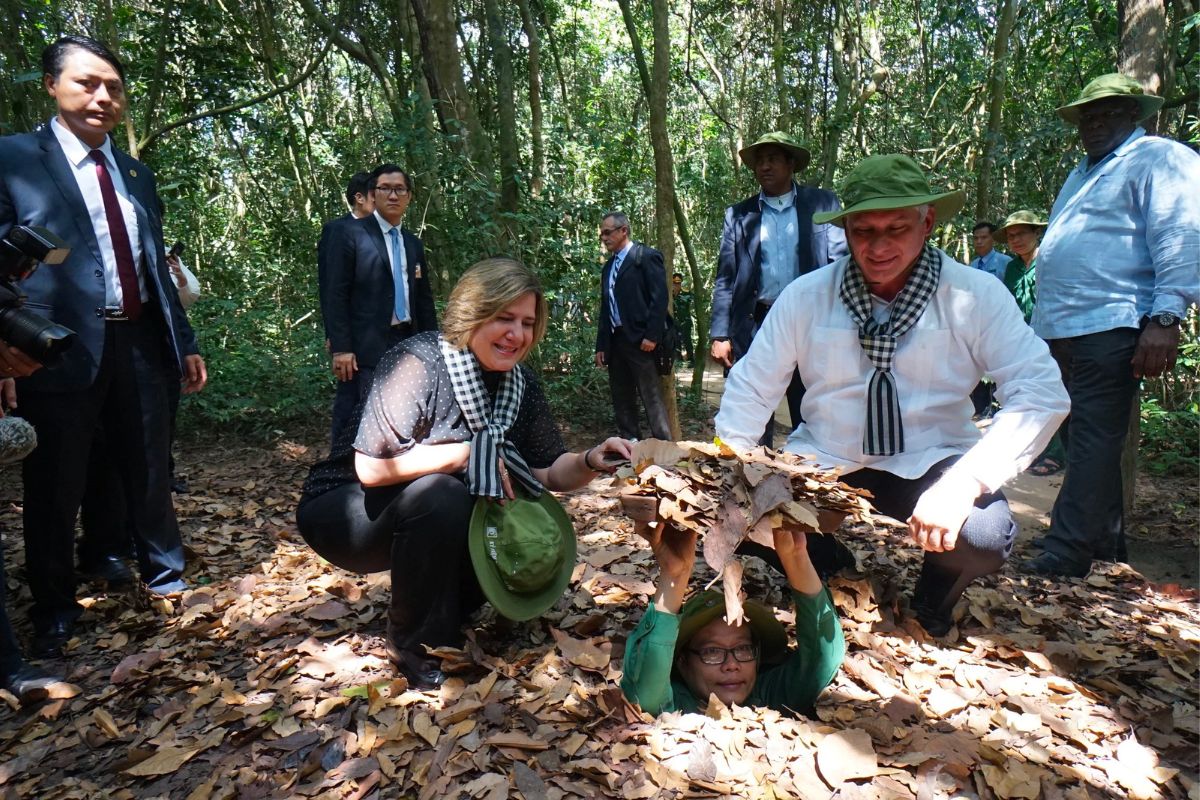
Especially, right under the tunnel, there are stalls selling food items that the Vietnamese soldiers and people ate in the tunnels, such as sweet potatoes, cassava, and pickled radishes with sesame salt dipping sauce. The flavors of these dishes are very simple but delicious, carrying a strong local flavor, and although simple, they are uniquely delicious.
Explore the war zone re-enactment area
The Cu Chi Tunnels war reenactment area still preserves many traces left behind by the war. Here, you can watch films reenacting the entire scenes of the daily life and combat of our troops and people in the tunnels. Historical landmarks of Vietnam are also recreated here such as the Nhà Rồng Wharf, One Pillar Pagoda, Long Bien Bridge,…
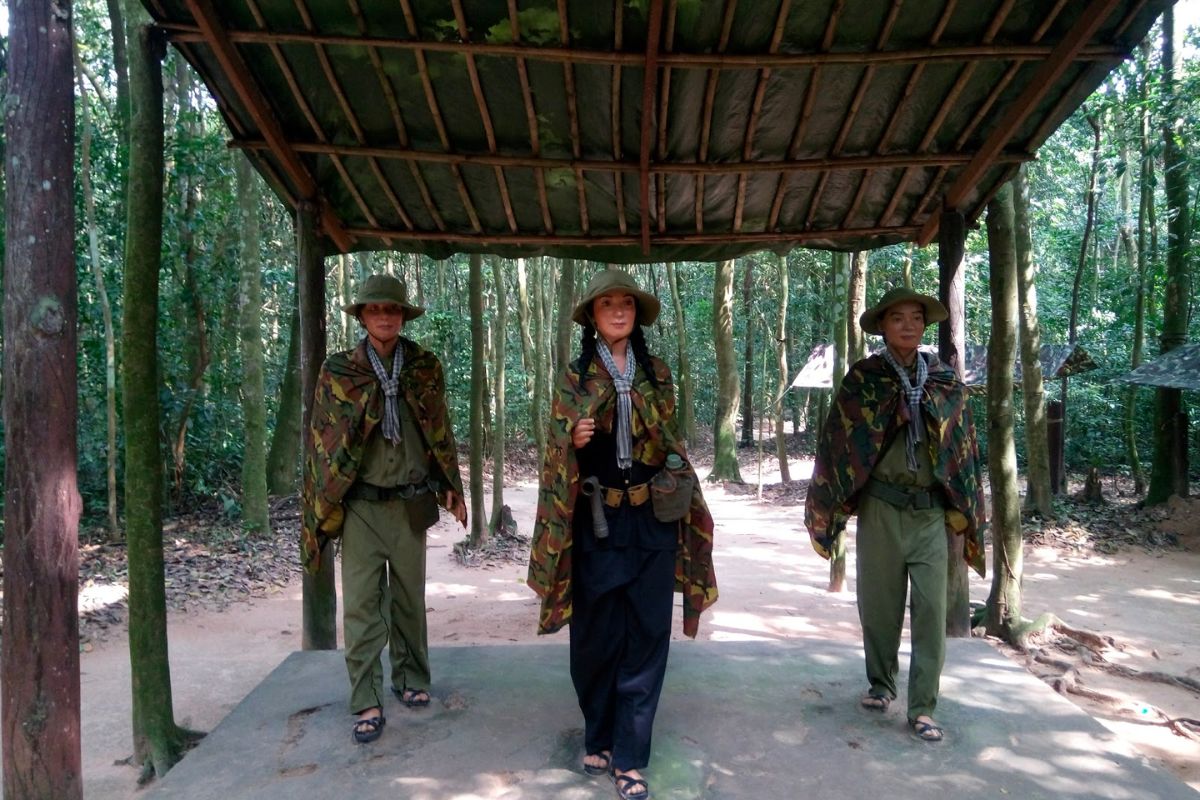
Try shooting and paintball activities
Test your marksmanship skills with shooting activities using replica firearms, providing a hands-on experience of the weapons used during the war. Additionally, visitors can partake in paintball battles set amidst the lush surroundings of the Cu Chi Tunnels.
Ticket price: 50.000 VND/ person/ 60 minutes.
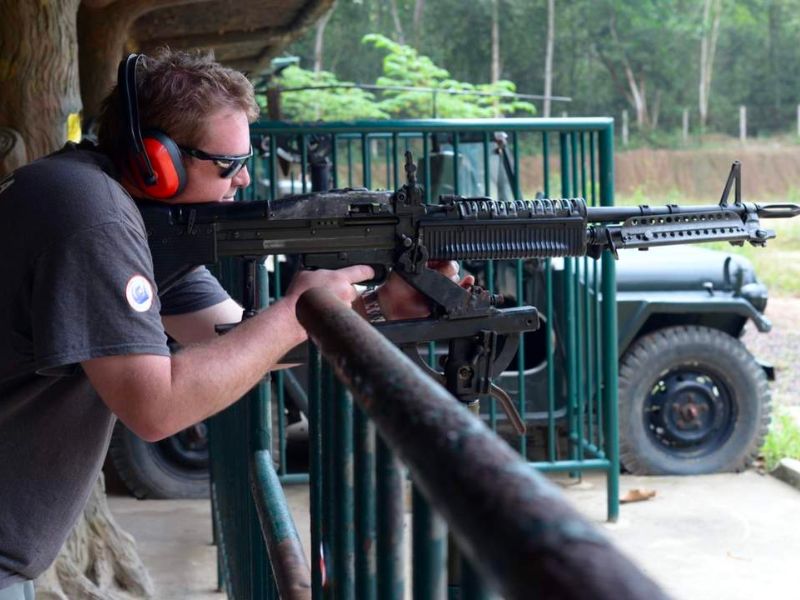 |
 |
Swimming in Cu Chi Ben Duoc Tunnels
Cool off from the tropical heat by taking a refreshing dip in the natural springs located near the Ben Duoc Tunnels. Surrounded by tranquil greenery, this secluded spot offers a peaceful retreat from the bustling tourist areas.
Ticket price: 20.000 VND/ person
Visit Trung An fruit garden
Conclude your Cu Chi Tunnels tour with a visit to Trung An Fruit Garden, where you can sample a variety of tropical fruits grown in the region. Enjoy a leisurely stroll through the orchards, savoring the flavors of fresh mangoes, jackfruits, and papayas.
What to wear to Cu Chi tunnels?
To have the most comfortable Ho Chi Minh City Cu Chi Tunnels tour, you should prepare suitable clothes. Since you’ll be moving through the jungle to reach the tunnels and go through deep underground chambers, below are the clothes we recommend when visiting Cu Chi Tunnels:
- Lightweight, breathable clothing: The weather in Ho Chi Minh City can be hot and humid, so opt for lightweight, moisture-wicking fabrics like cotton or linen to keep cool.
- Long sleeves and pants: Even though it’s tempting to wear shorts and a t-shirt, long sleeves and pants offer better protection against insects and scratches while navigating the outdoor areas and narrow tunnels.
- Comfortable shoes: You’ll be doing a fair bit of walking and crawling, especially when entering the tunnels. Sneakers or closed-toe shoes with a good grip are essential to avoid slipping and to protect your feet from the rough terrain.
- Hat and sunglasses: Since parts of the tour involve walking through open areas, bring a hat and sunglasses to shield yourself from the sun.
- Light jacket or raincoat: If you’re visiting during the rainy season (May to November), a light rain jacket might come in handy, as tropical showers can be unpredictable.
–
The Ho Chi Minh City Cu Chi Tunnels offer a captivating journey through Vietnam’s turbulent past, providing visitors with a unique opportunity to witness the resilience and ingenuity of the Vietnamese people. From the historical significance of the tunnels to the immersive experiences offered onsite, a visit to this iconic landmark is sure to leave a lasting impression. For an unforgettable tour experience in Vietnam and across Asia, consider booking with Asia Encounter, a reputable tour operator specializing in unique and immersive travel experiences. So, pack your curiosity and embark on an unforgettable adventure into the heart of Vietnam’s history.


